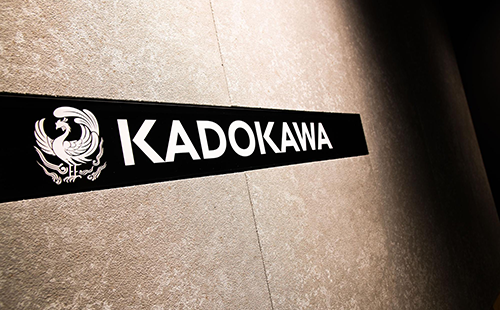3. Remuneration for Directors and Chief Officers
9. Remuneration for Directors and Chief Officers
- Policy on determination of amount of remuneration for officers etc. or calculation method thereof
- Total amount of remuneration, etc. by officer category and by type of remuneration, etc. and number of eligible officers
9.1 Policy on determination of amount of remuneration for officers etc. or calculation method thereof
The composition of remuneration for the Company's officers (Directors and Chief Officers) is as described below.
(1) Composition of remuneration and persons eligible to receive payment of remuneration
Remuneration of the Company’s Directors (excluding Outside Directors) and Chief Officers consists of monetary remuneration comprising (i) fixed remuneration made up of basic remuneration and service remuneration and (ii) performance-based variable remuneration. In addition, the Company has introduced (i) performance-based stock remuneration and (ii) restricted stock remuneration.
Remuneration of Outside Directors consists only of fixed remuneration.
| Officer category | Monetary remuneration | Non-monetary remuneration | |
|---|---|---|---|
| Fixed remuneration |
Variable remuneration |
Stock-based remuneration |
|
| Directors (excluding Outside Directors) and Chief Officers |
〇 | 〇 | 〇 |
| Outside Director | 〇 | ‐ | ‐ |
(2) Policy, etc. on determination of details of remuneration for officers (Directors and Chief Officers), etc.
At the meeting of the Remuneration Committee held on June 18, 2024, it passed a resolution regarding the policy for determining the content of the individual remuneration, etc. of Directors and Chief officers as follows. The Company’s Remuneration Committee has also confirmed that the method for determining individual remuneration, etc. of Directors and Chief officers and the content thereof determined for the fiscal year under review are consistent with this policy, and the Company believes that the method and content are in line with the policy.
- (i) Basic policy
-
The Company has adopted a remuneration structure that links remuneration for Directors (excluding Outside Directors) and Chief Officers to shareholder interests so that the structure can fully function as an incentive to achieve sustained improvement of corporate value, in accordance with its basic policy that remuneration for individual Directors shall be determined at an appropriate level based on their respective duties.
Specifically, remuneration of Directors (excluding Outside Directors) and Chief officers of the Company consists of (1) monetary compensation made up of (i) fixed compensation including basic compensation and service compensation and (ii) variable compensation that is performance-linked compensation and (2) non-monetary compensation made up of two types of stock compensation that are (i) performance-linked stock compensation and (ii) restricted stock compensation, while remuneration of Outside Directors of the Company consists only of fixed compensation that is monetary compensation.[Monetary remuneration]
A) Fixed remuneration- Fixed remuneration is determined based on the [standard amount according to positions and responsibilities of eligible Directors and Chief Officers. Fixed remuneration is paid monthly.
B) Performance-based variable remuneration
- The base amount of performance-based variable remuneration (monetary remuneration) is set based on fixed remuneration for eligible Directors and Chief Officers. They are evaluated based on the Company’s financial results and their individual performance related to their responsibilities. The amount of payment is determined within a range of 20% to 200% of the base amount.
- For the evaluation of performance-based variable remuneration, consolidated results, division results and individual qualitative targets according to roles of eligible Directors and Chief Officers are weighted to total 100%.
- Evaluation indicators for performance-based variable remuneration are based on consolidated net sales and consolidated operating profit from a perspective of emphasizing the Group’s growth potential and profitability.
- Performance-based variable remuneration is paid with monthly fixed remuneration.
[Non-monetary remuneration (stock remuneration)]
C) Performance-based stock remuneration- The Company has adopted a stock-based remuneration plan as non-monetary remuneration, etc.
- The stock-based remuneration plan is a performance-based stock remuneration system in which the Company’s shares are acquired through a trust funded by the Company and are delivered to individuals based on the individuals’ performance and contributions to the Company’s financial results for each fiscal year in accordance with the Rules of Stock-Based Remuneration Plan.
- Under the stock-based remuneration plan, consolidated operating profit is an indicator for the stock-based remuneration plan and a basic criterion for determining the level of achievement of business results because the Company reviews it as key financial data for achieving a sustained improvement in corporate value.
- For share-based compensation, the Company shall grant points in June each year based on individual performance, contributions to the Company's financial results for each fiscal year, etc.
- In the event that it is decided to deliver share-based compensation, the Company shall deliver 50% of the Company’s shares in August in a determination year, and the remaining 50% shall be delivered in August three years after the determination year.
D) Restricted stock (RS) remuneration
- The Company shall adopt a performance-based stock remuneration plan for granting the Company’s shares under the Share Granting Rules according to the level of achievement of business results and the level of individual contribution to the Company’s financial results. Under the stock-based remuneration plan, consolidated operating profit is an indicator for the stock-based remuneration plan and a basic criterion for determining the level of achievement of business results because the Company reviews it as key financial data for achieving a sustained improvement in corporate value.
- (ii) Policy on determination of amount of monetary remuneration, amount of performance-based remuneration, etc. or the ratio of non-monetary remuneration, etc. to individual remuneration, etc. for each Director and Chief Officers
-
The ratio of fixed remuneration to variable remuneration for Directors (excluding Outside Directors) and Chief Officers is set as 50%:50%, in principle. The ratio of stock-based remuneration to fixed remuneration is not set.
- (iii) Matters regarding the determination of details of individual remuneration, etc. for Directors and Chief Officers
-
The Remuneration Committee adopts a resolution specifying remuneration, etc. for Directors and Chief Officers. The Remuneration Committee is chaired by an Independent Outside Director. Independent Outside Directors accounts for a majority of the committee members. The Committee considers and determines remuneration in accordance with the above basic policy.
9.2 Total amount of remuneration, etc. by officer category and by type of remuneration, etc. and number of eligible officers
| Officer category | Total amount of remuneration (millions of yen) |
Total amount by type of remuneration (millions of yen) |
Number of eligible officers |
||
|---|---|---|---|---|---|
| Monetary remuneration |
Non-monetary remuneration |
||||
| Fixed remuneration |
Variable remuneration |
Stock-based remuneration |
|||
| Directors (excluding Outside Directors) |
50 | 50 | ‐ | ‐ | 3 |
| Outside Directors | 102 | 102 | ‐ | ‐ | 8 |
| Chief Officers | 398 | 179 | 218 | ‐ | 7 |
(Notes)
1. Remuneration for officers concurrently serving as Directors and Chief Officers and the number thereof are recorded in the Chief Officers columns.
2. The number of Chief officers and their remuneration, etc. include one Chief officer who retired from his position as Chief officer during the fiscal year ended March 31, 2025 and the remuneration paid to him.
Governance
-
1. Management policy and corporate governance
-
2. Board of Directors, Nominating Committee, Remuneration Committee, Audit Committee, Independent Auditors
-
4. Internal Control
-
5. Information on shareholdings, takeover defense measures
-
6. IR policy, enhancement of disclosure and insider information control













